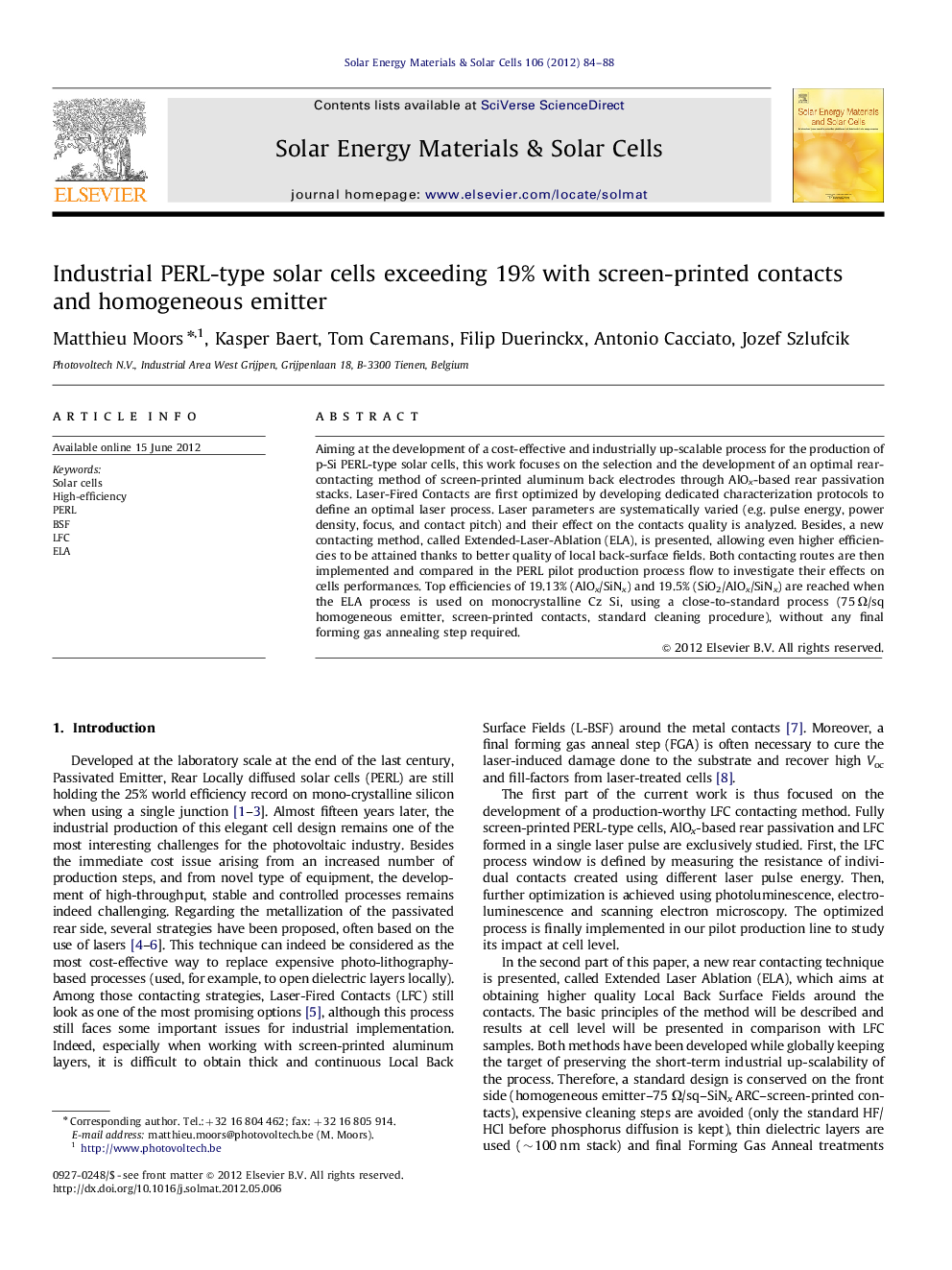| Article ID | Journal | Published Year | Pages | File Type |
|---|---|---|---|---|
| 78362 | Solar Energy Materials and Solar Cells | 2012 | 5 Pages |
Aiming at the development of a cost-effective and industrially up-scalable process for the production of p-Si PERL-type solar cells, this work focuses on the selection and the development of an optimal rear-contacting method of screen-printed aluminum back electrodes through AlOx-based rear passivation stacks. Laser-Fired Contacts are first optimized by developing dedicated characterization protocols to define an optimal laser process. Laser parameters are systematically varied (e.g. pulse energy, power density, focus, and contact pitch) and their effect on the contacts quality is analyzed. Besides, a new contacting method, called Extended-Laser-Ablation (ELA), is presented, allowing even higher efficiencies to be attained thanks to better quality of local back-surface fields. Both contacting routes are then implemented and compared in the PERL pilot production process flow to investigate their effects on cells performances. Top efficiencies of 19.13% (AlOx/SiNx) and 19.5% (SiO2/AlOx/SiNx) are reached when the ELA process is used on monocrystalline Cz Si, using a close-to-standard process (75 Ω/sq homogeneous emitter, screen-printed contacts, standard cleaning procedure), without any final forming gas annealing step required.
► An optimal rear contacting method for PERL-type solar cells is developed. ► An LFC-based process is first optimized by using dedicated characterization methods. ► A new contacting technique is then presented (Extended Laser Ablation or ELA). ► The ELA method is shown to provide thick and continuous Local-BSF layers. ► Efficiencies up to 19.5% are obtained while preserving a cost-effective process.
